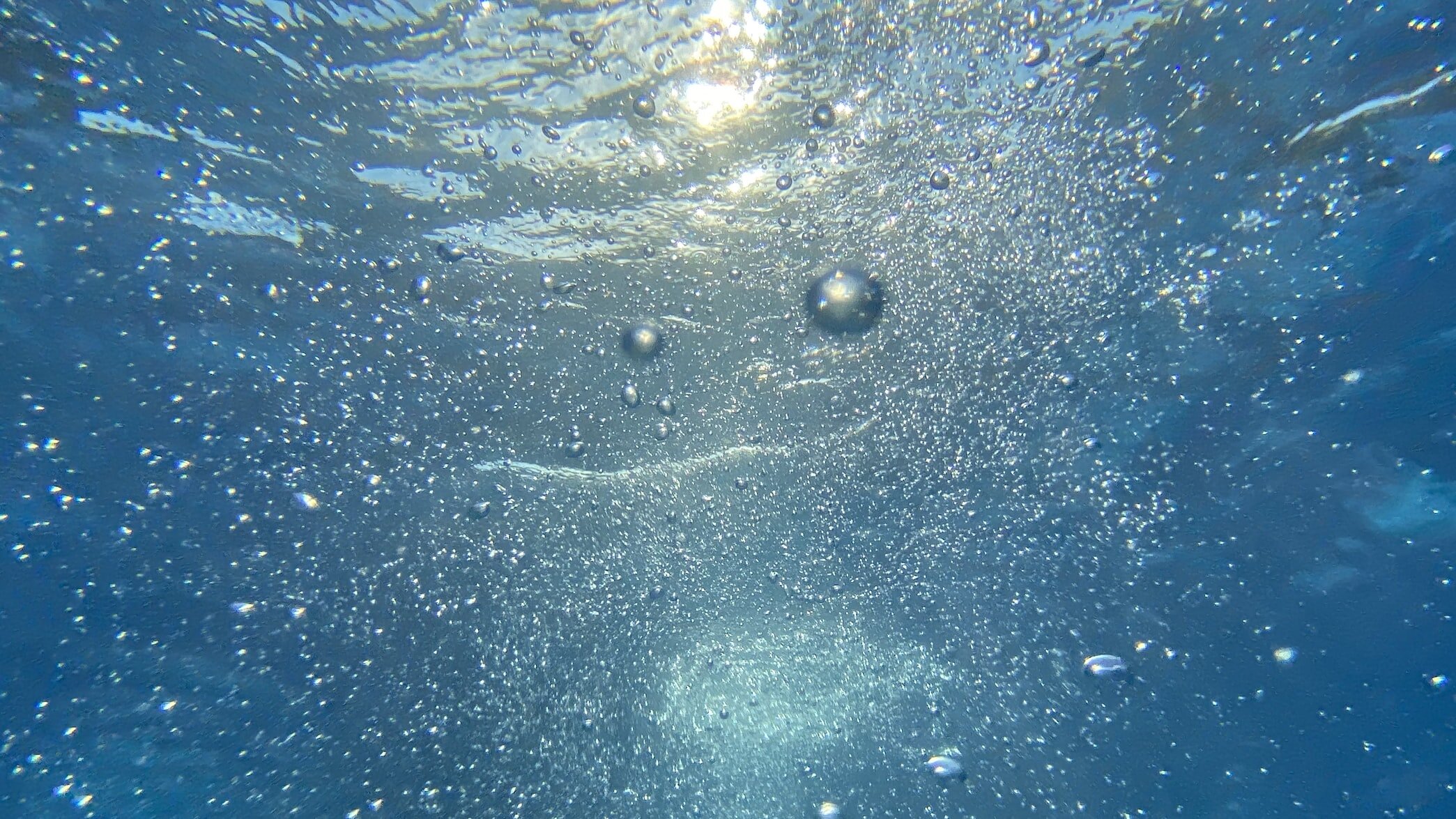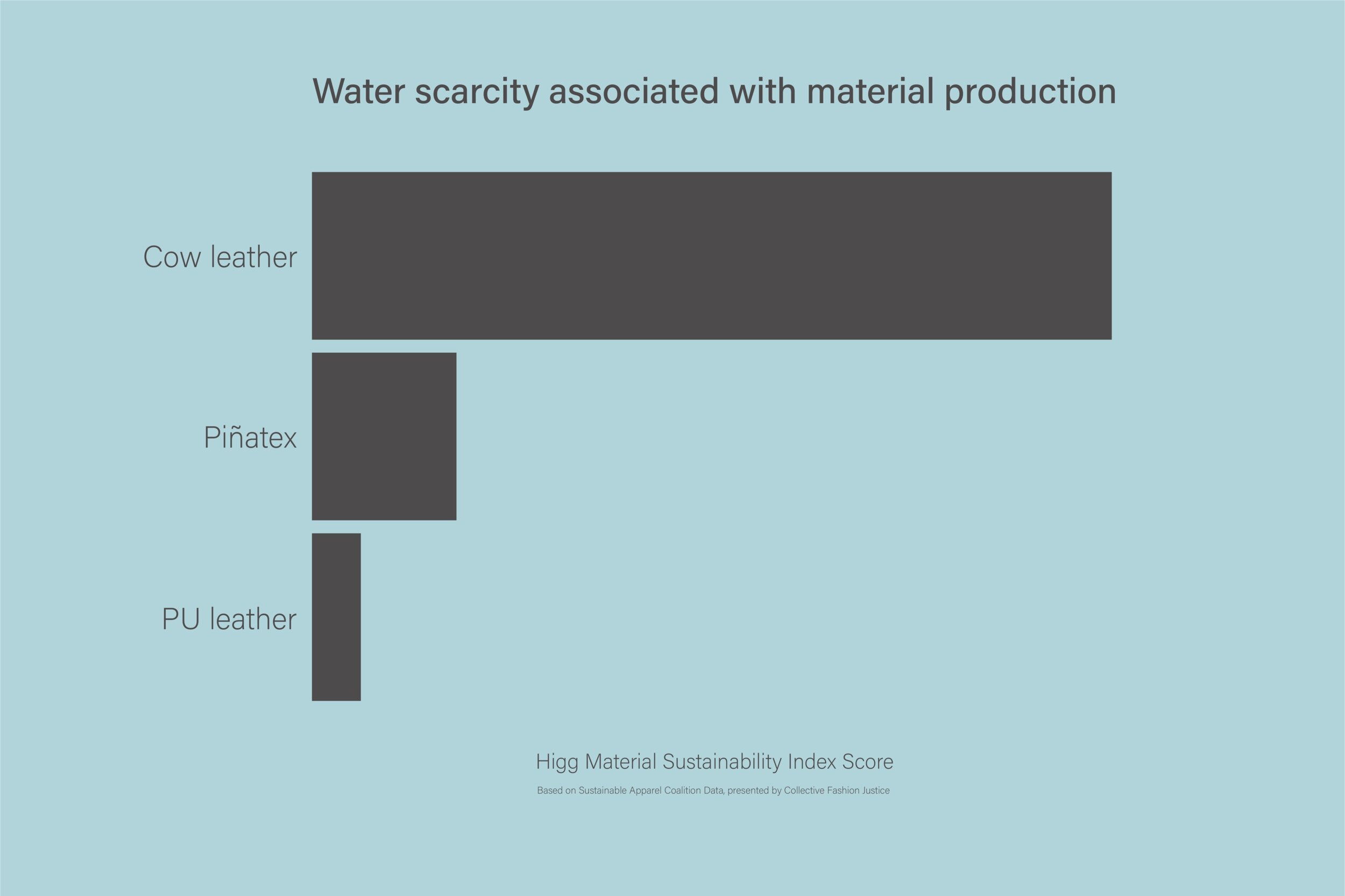Water wastage and pollution for fashion
From crop production to fabric dyeing, the fashion industry is thirsty. However, less spoken about is the water footprint and pollution caused by animal materials.

“It’s estimated that the fashion industry currently uses around 93 billion cubic metres of water per year, which is 2 per cent of all freshwater extraction globally, and represents more than one tenth of the water used by all types of industry. On current trends, this amount is set to double by 2030.”
- Common Objective
Animal-derived materials should not be forgotten in water wastage discussions.
Growing crops to feed ducks, geese and some sheep and cattle exploited by the fashion industry is rarely considered as a water wastage issue. Similarly, the water used to grow mulberry leaves for silkworms to eat is widely ignored. Leather has a large water footprint, especially due to the tanning process. We aim to bring these issues to light.
Leather and water consumption
The water footprint of leather products
Many people are likely to have heard that a single conventional cotton t-shirt requires up to 2,494 litres of water to make.
However, it is far less commonly known that a pair of boots requires about 12,370 litres of water to produce, or that the water footprint of one leather tote bag is 17,128 litres.
Leather compared to alternatives
According to Sustainable Apparel Coalition’s 2020 data, cow skin leather is at least 14 times more thirsty than the most common leather alternative, polyurethane synthetic leather.
Equally important to consider is not only water use, but water pollution.
Effluent released not only from dye-houses, but also factory farms, slaughterhouses, wool scouring facilities and tanneries pollute water.
Slaughterhouses
Not only do slaughterhouses use a lot of water—a case study by the Australian animal agricultural industry saw a slaughterhouse killing sheep using 15,472,000 [PDF 2.1MB] litres of water each week—but they pollute surrounding waterways.
Slaughterhouses are a part of almost all animal-derived material supply chains, leather, wool and down included. If water is not properly treated, it can cause eutrophication, soil contamination impacting soil fertility, and biodiversity loss. It can even harm the health of surrounding communities.
Image: Wastewater at the Yad Hanna Wastewater Treatment Plant bloodied by the detritus from slaughterhouses in the city of Tulkarem / Alon Heyman
Tanneries
Most leather is tanned with carcinogenic chemicals like chromium (90%), formaldehyde, and arsenic. These chemicals cause health problems for tannery workers, but also cancer and health issues in fish and other animals exposed to waste water released from the tannery.
Each day, 22,000 cubic metres of untreated waste-water flows through major tanning country India and into the Ganges River, which people drink from and bathe in.
95% of US tanneries now operate overseas to avoid environmental oversize penalties. The land under ex-tannery sites cannot be used for farming or building due to toxicity.
Image: Tannery wastewater in Dhaka
Wool scouring facilities
Wool is naturally coated in lanolin grease. To turn it into a wearable fibre, it must be ‘scoured’. The liquid waste from wool scouring baths can be a threat to waterways. The organic effluent that runs into our waterways from a typical wool scouring plant is akin to that of the sewage from a town of 30,000 [PDF 3.4MB] people.
The scouring process involves chemical detergents, including alkylphenol ethoxylates (APEOs). APEOs are endocrine disruptors, which means they interfere with the body’s endocrine system. APEOs can be toxic to aquatic life, even causing feminisation of male fish which devastates native fish populations.

Eutrophication occurs when water is overly enriched with minerals and nutrients, leading to excessive algae growth and often oxygen depletion. It is extremely environmentally harmful. This process creates ‘dead zones’, where aquatic life cannot survive.
Whether it’s factory farms producing down or fur, feedlots and sale yards full of cattle and sheep slaughtered for leather and wool, or the facilities that process these materials, animal-derived supply chains all contribute to eutrophication.
Image: A dead catfish washed up in eutrophic waters / Andy Morrison

Water is precious, and the future of fashion knows that.
Want to keep learning?
-

Deforestation and biodiversity
The animal-derived materials used for fashion are a leading cause of deforestation and associated biodiversity destruction and extinction.
-

Microfibre pollution in fashion
Microfibres are tiny fibre fragments from garments that enter the environment through wastewater when we wash our clothes — so are synthetics all to blame?
-

Consumption habits
More than anything, we need to consume less, while the fashion industry simultaneously produces less. We need to support circularity and degrowth in fashion.






